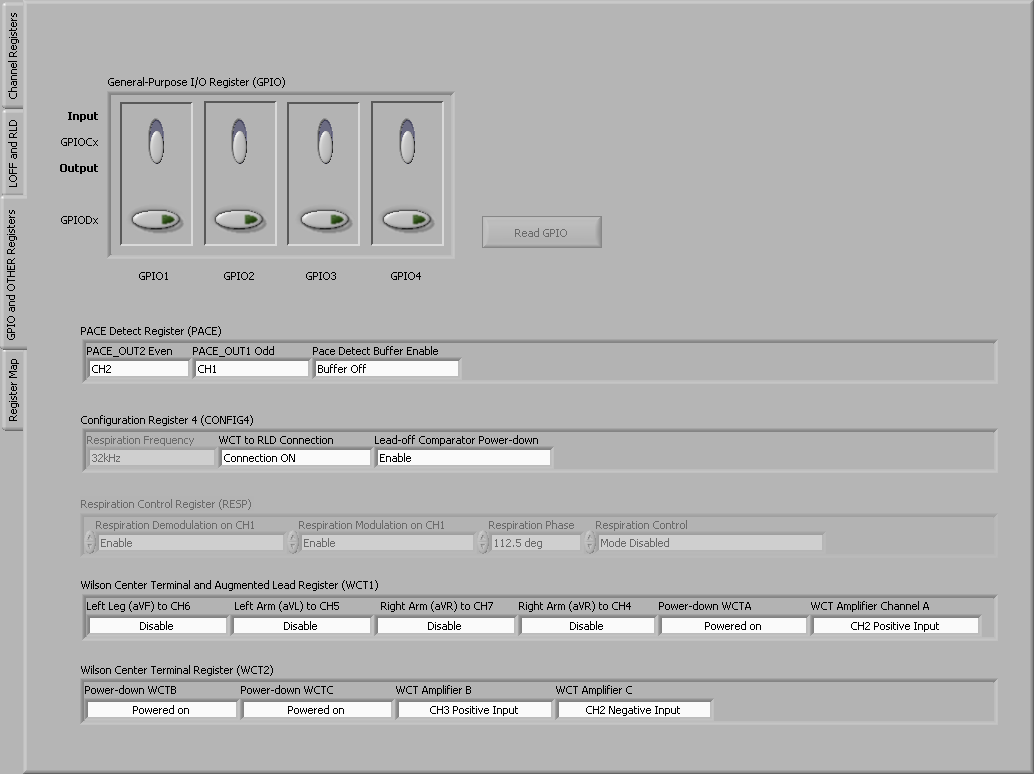SBAU171D May 2010 – January 2016 ADS1198 , ADS1298
-
ADS1298ECG-FE/ADS1198ECG-FE
- Trademarks
- 1 ADS1298ECG-FE/ADS1198ECG-FE Overview
- 2 Quick Start
- 3
Using the ADS1298ECG-FE Software
- 3.1 Application User Menu
- 3.2 Top-Level Application Controls
- 3.3 About Tab
- 3.4 ADC Register Tab
- 3.5 Analysis Tab
- 3.6 Save Tab
- 4 ADS1x98ECG-FE Input Signals
- 5 ADS1298ECG-FE/ADS1198ECG-FE Hardware Details
- ASchematics, BOM, Layout, and ECG Cable Details
- BExternal Optional Hardware
- CSoftware Installation
3.4.4 GPIO and OTHER Registers Tab (ADC Register)
The GPIO and Other Registers tab, located under the Analysis tab, includes controls for GPIO1 through GPIO4, respiration phase and frequency, routing of the Wilson amplifiers, and derivation of the Goldberger terminals. Figure 14 shows the GPIO and OTHER Registers tab and all controls contained on the tab.
 Figure 14. GPIO and OTHER Register Tab
Figure 14. GPIO and OTHER Register Tab The General-Purpose I/O Register (GPIO) controls the four general-purpose I/O pins. Each GPIO can be set as an input or an output via GPIOCx controls. If the output is selected, the GPIODx control is enabled allowing the user to set the value to output. If the GPIO is selected as an input, the GPIODx control is disabled and shows the value of the GPIO. If any of the GPIOs are selected as inputs, the Read GPIO control is enabled which allows the GPIODx values to be updated to the current GPIO value.
The PACE Detect Register does not enable a special PACE measurement mode. The register allows for enabling and configuration of the PACE amplifiers. PACE Amplifier 1 can connect to input channels 1-4 and Pace Amplifier 2 can connect to input channels 5-8.
The Configuration 4 Register allows control over the Respiration Frequency, WCT connection to the RLD and lead-off comparator enable status.
NOTE
The Respiration Frequency control is disable since the functionality is not available on the ADS1298 and ADS1198.
The Respiration Control Register is disabled for the ADS1298 and not available for the ADS1198.